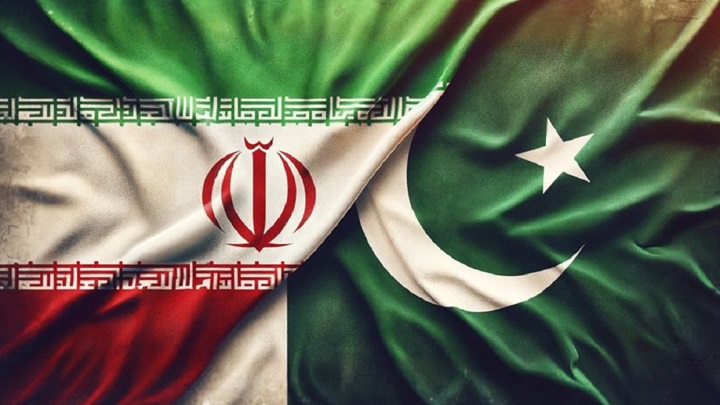The Pakistan-Iran Border Conflict: In Historic Perspectives
The Pakistan-Iran Border Conflict: In Historic Perspectives
By Farooq Tariq

Pakistan and Iran share a long border that is populated by Baloch tribal ethnic communities on both sides of this fractious border. It is not surprising to know that after World War I, the British colonialist divided Balochistan and gifted Western Balochistan to Iran. This colonial legacy of a divided Baloch people, who still seek to be united causes periodic unrest across the region in both Pakistan and Iran. So besides separatists, radical armed groups, left over from Afghan and other ‘forever wars’ find refuge in these restive regions.
It is in this melee, that Iran believed that non-governmental forces from Pakistan’s Baloch regions attacked some cites within the Iranian border on January 16. The Pakistan air force retaliated on 18th January, inside the Iranian bordering town killing at least 9 people. This Pakistan-Iran conflict has the potential to escalate into a full scale war. However, both Pakistani and Iranian governments took a wise step and agreed to de-escalate, maintain a status quo and re-establish full fledge diplomatic relations. Various state actors in the region encouraged this settlement.
For the time being, there is a complete lull, as both countries appear satisfied after taking revenge from their “enemies” and spilling some blood of radical elements who take refuge in each other’s country. Both Iran and Pakistan claim to have killed some from the terrorist group known as the Jaish al Adl (army of justice) in Pakistan and the Baloch separatists in Iran. This Jaish al Adl armed group in Pakistan claimed responsibility for the attack in the Iranian town of Rask in the Southern border province of Sistan – Balochistan, an attack that was condemned by Pakistan.
It is the Baloch people who are the targets on both sides of the Iran-Pakistan border. Some of these Baloch tribes fight “Pakistani atrocities” and others are fighting the Iranian colonial occupation of part of Balochistan. Pakistan’s attack on “Balochistan separatists camps” in Iran took place at a time when many hundreds of Baloch activists are camping in Islamabad to recover missing Baloch activists and stop extra judicial killings. These Baloch activists came to Islamabad from Turbat district of Balochistan in a long march that caught the attention of many internationally.
The escalation of border tensions turning into missiles attacks inside Pakistan and Iran has to be seen in the background of Israel’s genocide of Gaza-Palestinians. This is the first time that there has been an air strike and missiles attack by Pakistan inside Iran. It is clear that this satisfies the goals of American imperialism in this region because Iran is their designated enemy and if Iran is kept busy in defending itself from attacks from Pakistan, it would divert them from supporting the Palestinians and Iranian proxies.
The Background to the Iran-Pakistan Conflict
There is a long history of border conflict between Iran and Pakistan. There was a guerrilla war in Balochistan during the first Bhutto government in the 1970s. This took place after an elected provincial government of National Awami Party (NAP) in opposition to Pakistan People’s Party federal government was overthrown by Bhutto on the instigation of Shah of Iran in 1973. Many Baloch youth went into the mountains to fight back and many migrated to Afghanistan and Iran.
During this decade, Iran tried to bring in other tribes into the neighboring province of Sestan-Balochestan to change the majority of Baloch people into a minority, similar to what Israel did with Palestinians. The Shah of Iran was terrified with the growing resistance of the Baloch tribes inside Iran that he asked Zulfiqar Ali Bhutto to take action against the provincial government of NAP. Bhutto brutally crushed the Baloch resistance with help of army operations inside Balochistan. The Shah of Iran was afraid of the fact that if Eastern Balochistan becomes independent, then Western Balochistan inside Iranian territory would become part of it. The Baloch people have been targeted since then on both sides but the resistance in many forms continues till today.
Both countries, the religious groups in Pakistan and nationalist groups in Iran blame each other for harboring “terrorists” in their countries. If this conflict escalates again, it would damage both countries’ economies to a low level never seen before. Oil supplies to Pakistan can be hit hard by the Iranians. Trade between the two countries would halt. Already Iran benefits from the “smuggling” of sanctioned Iranian oil in bulk into Pakistan at present.
Earlier in August 2023, the foreign ministers of both countries met in Islamabad to formulate a five-year trade plan with the aim of trade targets of $5 billion. It is important to note that trade activities between Pakistan and Iran continued as usual, even during this fracas, as both countries kept all trade routes open despite airspace violation by Iranian forces and the subsequent retaliatory strike by Pakistani forces. Trade activities continue along border towns including Taftan, Gwader, Kech, Panjgor and Washuk.
The threat of a full fledge war appears to have de-escalated at present as the foreign ministers of both Iran and Pakistan have spoken to each other and emphasized “brotherly” relation. However, this is just an interval between the two so-called brother Islamic countries, who are waiting for a better time to strike, depending on their internal/domestic crisis situation.
The women led movement against the Islamic Republic of Iran during the last few years and the women led ‘long march’ by Baloch activists in Pakistan are the real hope for progressive movements in both countries and internationally. There has to be a stop of abductions and killings of Baloch by the Pakistani government and in Iran. Peace in the region is necessary for its dignified survival.
Farooq Tariq
Asia Europe Peoples Forum


